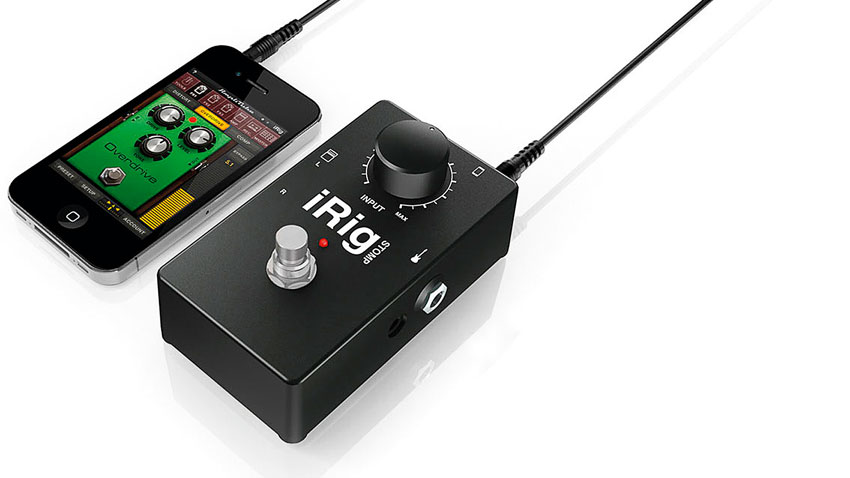MusicRadar Verdict
The iRig Stomp provides a solid connection without having to be right next to the iOS device, it's also the practical choice should you wish to use one as part of your signal chain.
Pros
- +
Robust. Versatile connectivity. Incorporates iOS into standard signal chain.
Cons
- -
Not much.
MusicRadar's got your back
IK Multimedia has made a move away from the pocket-sized form factor of most iOS input devices and placed its iRig interface into a standard stompbox housing that connects to your iPhone/iPad or iPod touch's headphone socket via a two-metre cable.
The pedal is powered by a battery or nine-volt adaptor and has a single knob to set the input gain to your app.
In Use
"The original iRig suffered from feedback on high-gain amp sims, but the iRig Stomp suffers no such problems"
In common with some other input devices that use the headphone socket connection to iOS, IK's original iRig suffered from feedback when playing through high-gain amp sims, but the good news is that the iRig Stomp, courtesy of its active battery-powered output circuit, features noticeably improved headroom and suffers no such problems.
It's a robust device for plugging in for a spot of silent practice while listening through the mini-jack headphone output, but it can also be connected to an amp or monitoring system or even integrated into your pedal chain via its standard jack outputs.
The footswitch mutes the signal from the iOS device, allowing you to turn any sounds that you use on and off, just like a regular stompbox.
Trevor Curwen has played guitar for several decades – he's also mimed it on the UK's Top of the Pops. Much of his working life, though, has been spent behind the mixing desk, during which time he has built up a solid collection of the guitars, amps and pedals needed to cover just about any studio session. He writes pedal reviews for Guitarist and has contributed to Total Guitar, MusicRadar and Future Music among others.
“We were arguing a lot and we were miserable”: How Green Day exceeded expectations with their most ambitious song
"There’s plenty for us guitarists to learn – and ‘less is more’ is the overriding lesson": how to play like George Harrison on The Beatles' Abbey Road
“They didn’t like Prince’s bikini underwear”: Prince’s support sets for the The Rolling Stones in 1981 are remembered as disastrous, but guitarist Dez Dickerson says that the the crowd reaction wasn’t as bad as people think











